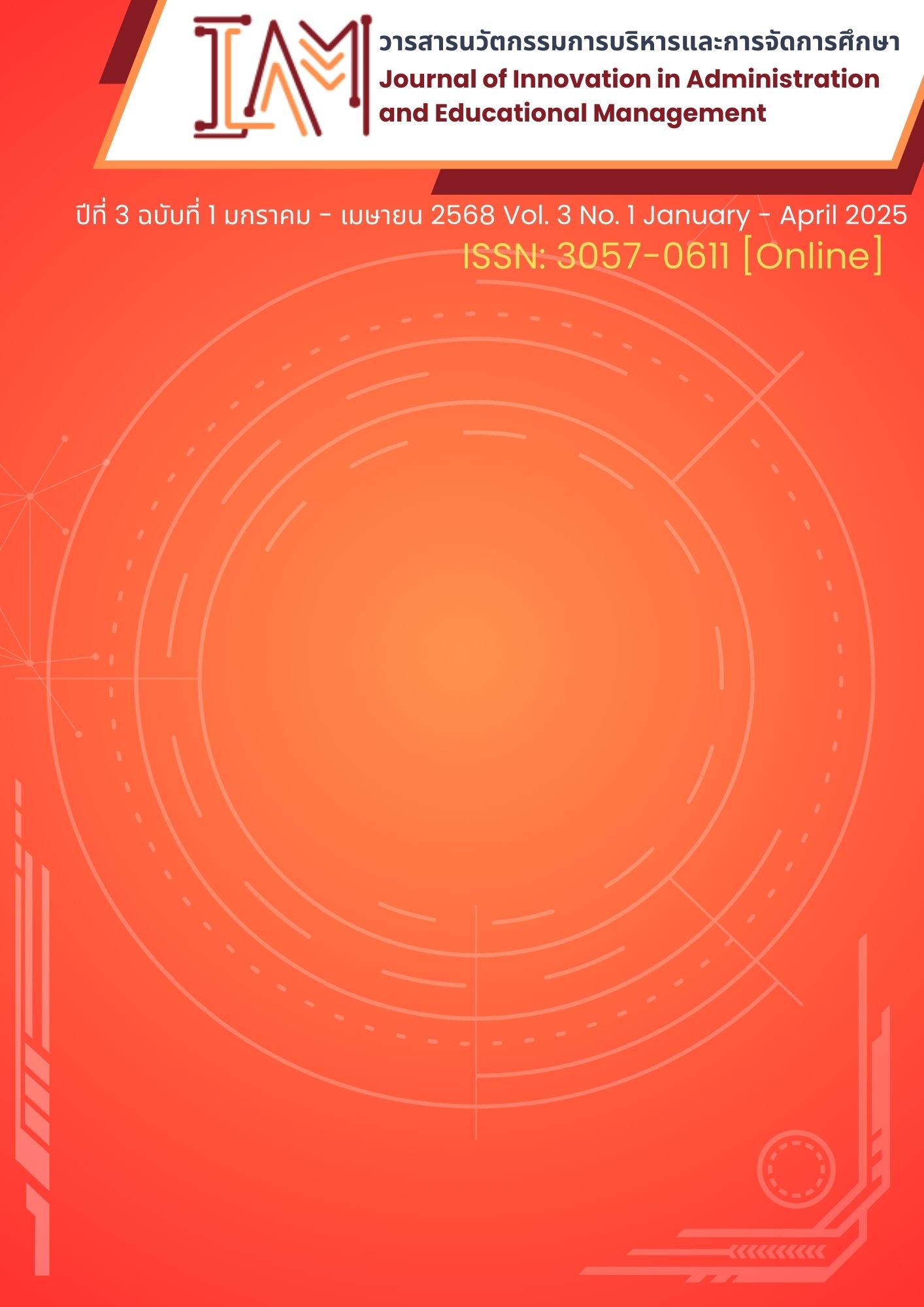Evaluation of the Development and Promotion of Morality and Ethics Project for Students at Banpakklong 17 School, Nakhonnayok Primary Educational Service Area Office
Keywords:
Project Evaluation, Morality, EthicsAbstract
The objective of this research was to evaluate the context, input, process, and product of the development and promotion of morality and ethics program for students at Banpakklong 17 School using the CIPP evaluation model. The evaluation results revealed the following findings: 1. Context Evaluation: It was found that the context aligns with the objectives of the National Education Act, the policies of the Ministry of Education, and the project's objectives. The program is appropriate to the problems and needs of the school, as well as the implementation approach. Overall, the context evaluation was rated the highest. 2. Input Evaluation: The evaluation revealed adequate preparedness, sufficiency, and support in terms of personnel, budget, materials, equipment, and project management. Overall, the input evaluation was rated the highest. 3. Process Evaluation: The preparation, implementation, evaluation, and improvement stages of the project were carried out appropriately. Overall, the process evaluation was rated the highest. 4. Product Evaluation: 4.1 The product evaluation of the development and promotion of morality and ethics program for students at Banpakklong 17 School, Nakhonnayok Primary Educational Service Area Office, showed that both teachers and students participating in the program agreed that the quality and quantity of the eight activities in the program met the evaluation standards. Overall, the product evaluation was rated the highest. 4.2 The comparison of the satisfaction levels of teachers and parents regarding students before and after participating in the program showed that teachers and parents were significantly more satisfied after the students participated in the program, with a statistically significant difference at the .05 level. This result meets the established criteria.
Downloads
References
ชฎาพร เสนเผือก. (2560). รายงานการประเมินโครงการพัฒนาคุณธรรมนักเรียนตามแนวการดำเนินงานโรงเรียนคุณธรรม โรงเรียนวัดปากจ่า. ปัตตานี: สำนักงานเขตพื้นที่การศึกษาประถมศึกษาปัตตานี เขต 2.
ชูชาติ แปลงล้วน. (2563). การประเมินโครงการพัฒนาคุณธรรมจริยธรรมนักเรียนในโรงเรียนคุณธรรม สพฐ. สำนักงานเขตพื้นที่การศึกษาประถมศึกษาเชียงราย เขต 4. วารสารสังคมศาสตร์และมานุษยวิทยาเชิงพุทธ. 5(7), 379 - 393.
นฤมล วิทยาวุฒิรัตน์. (2562). การประเมินโครงการพัฒนาคุณธรรมจริยธรรมในโรงเรียนคลองเมืองพิทยาคม. วารสารเทคโนโลยีและสื่อสารการศึกษา คณะศึกษาศาสตร์ มหาวิทยาลัย มหาสารคาม. 2(4), 97 - 107.
สำนักงานปลัดกระทรวงศึกษาธิการ. (2565). รายงานผลการประเมินคุณธรรม จริยธรรม และความเป็นพลเมืองของผู้เรียนทุกช่วงชั้น. กรุงเทพฯ: สำนักนโยบายและยุทธศาสตร์ สำนักงานปลัดกระทรวงศึกษาธิการ.
สำนักงานเลขาธิการสภาการศึกษา. (2560). แผนการศึกษาแห่งชาติ พ.ศ. 2560 – 2579. กรุงเทพฯ: พริกหวานกราฟฟิค จำกัด.
อรรถพล เกิดด้วยทอง. (2566). การประเมินโครงการพัฒนาคุณธรรม จริยธรรมนักเรียนของโรงเรียนบ้านโรงเหล็ก สำนักงานเขตพื้นที่การศึกษาประถมศึกษานครศรีธรรมราชเขต 4. วารสารพุทธสังคมวิทยาปริทรรศน์. 8(1), 69 - 81.
Stufflebeam, D. L. (2003). The CIPP model for evaluation. In T. Kellaghan & D. L. Stufflebeam (Eds.), International handbook of educational evaluation (Vol. 9, pp. 31 - 62). Kluwer International Handbooks of Education. Springer.
zWillems, F., Denessen, E., Hermans, C. & Vermeer, P. (2012). Students' perceptions and teachers' self-ratings of modelling civic virtues: An exploratory empirical study in Dutch primary schools. Journal of Moral Education, 41(1), 1 - 17.
Downloads
Published
How to Cite
Issue
Section
License
Copyright (c) 2025 Journal of Innovation in Administration and Educational Management

This work is licensed under a Creative Commons Attribution-NonCommercial-NoDerivatives 4.0 International License.






